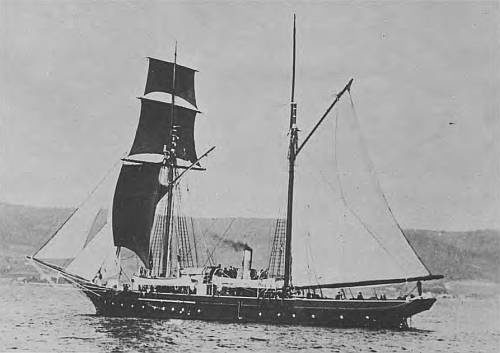- Author
- Cowburn, Professor P. M.
- Subjects
- None noted
- Tags
- None noted.
- RAN Ships
- None noted.
- Publication
- August 1972 edition of the Naval Historical Review (all rights reserved)

In an Australian setting Gowlland is no less perceptive, but it is his pen rather than his brush that has left behind the record. Gowlland arrived at Sydney in HM Surveying Ship Hecate in June 1863. Once we start reading his journal, we are struck by a quality it contains which can perhaps only be called its fidelity; there is no high writing, there are few purple passages and, except for an occasional outburst, there is a commendable commonsense about everything he writes. Thus the reader is at once transported to Sydney and can see the Harbour there with the sun glinting on its almost landlocked waters and hear the sound of activity on Cockatoo Island where the Miranda was undergoing repairs, a more serious affair than was expected since she was found to be ‘perfectly rotten’ with some of her timbers ‘literally crumbling away’.
‘Sydney Harbour’, writes Gowlland, ‘is, I suppose, one of the finest and most capacious in the world, good anchorage over it everywhere; and such numberless little coves running inland, forming each in themselves a tolerable sized harbour’. But ‘the great drawback’, he adds, ‘is the bar at the entrance on which at high water springs is 29 feet and at low water only 22, so that a line-of-battle ship would have to wait her opportunity to enter’.
Thus Gowlland at once puts his finger on one of Sydney’s chief disadvantages, and he moves on to another in the next sentence – the siting of the lighthouse on the South Head – understanding immediately why the Dunbar came to grief. Again, a few sentences later, he recognises a third when he writes that the defences were open to great improvements in that at present an enemy ship could enter the Harbour and inflict damage on a large scale with impunity. Later he reveals that the Imperial Government had offered the 84-gun Brunswick to New South Wales at a moderate figure on condition that the colony had her armour-plated, and he notes the significant point that this offer was hardly likely to be accepted since the expense of keeping such a vessel in commission would involve the Government in ‘such a sum of money as would enable them to build batteries on almost every point within the Harbour from the entrance to the Pinchgut’. As far as is known, nothing further came of this suggestion.
Hecate left Sydney for Moreton Bay on 24th July 1863. On arrival there her officers were plunged into a local controversy about how best to dredge the Brisbane River. Gowlland again shows himself to have been sensible in his approach to this matter. He was not in favour of any snap decision, thinking it unlikely that his captain could hope to arrive at a satisfactory answer without ‘a most careful survey’ first. He noted that established settlers and steamer captains, who were more likely to know what they were talking about and would certainly know the river well, favoured the view of the engineer-in-charge, a man named Francis, who recommended that the north-west channel should be scooped out. ‘I should think myself’, writes Gowlland with detachment but without seeming at all patronising, ‘that a man who has had so much experience in dredging bar rivers as Mr. Francis has, and always with the greatest success and certainty, would be likely to know more on the subject than persons paying a flying visit to the localities, and not so intimately acquainted with the subject’. If this attitude is at all typical of those of other naval officers involved suddenly in local affairs, we can safely imagine that there was little wrong with the liaison between the Navy and the civilian authorities.
A few weeks later the Hecate had reached Rockingham Bay. Her officers had been asked to select a site for a new town ‘communicating by roads to the interior’, according to Gowlland, ‘so that farmers living inland might more easily and cheaply ship their wool off to its final destination by this shorter outlet to the sea than by the present and lengthy mode of carting it all the way to Brisbane’. Though there was good anchorage in the Bay, shoal-water extended almost a mile out from the shore, necessitating the construction of long piers, though this could be carried out comparatively cheaply, since there was plenty of good timber in the immediate neighbourhood. Another ‘bugbear’, as Gowlland called it, which might easily prevent a successful settlement there, was ‘the numerous mangrove swamps that fringe the shore in all directions and from their foul effluvia emitting fever and ague to all white settlers in range’. Viewing this rather bleak prospect, Gowlland understandably concluded that the area could never be made into farming country, and indeed there were other difficulties: while a survey on the scale of two inches to the nautical mile was being carried out, the natives proved surprisingly tiresome, hauling down the marking posts as soon as the boats were any distance from shore. Gowlland was scornful of these particular specimens: ‘they are a miserable, puny race of creatures of small stature and little physical development, almost black in colour and both sexes entirely naked. The men are tattooed all over and are cunning, suspicious and treacherous, loaded rifles being the only mode of keeping them at a distance or prosecuting our work’.
